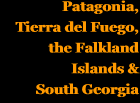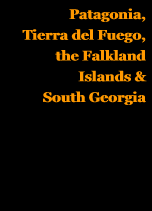The railway in action
An album of additional pictures showing trains and stations
These have been set out in order from the Ancud end of the line down to Castro.
1
An early scene at Ancud
The postcard shown below, also forwarded by Señor Moraga, shows one of the Davenport locos. A tinted view of Ancud station, reportedly in 1920, includes a group of workers standing on a rake of 'plataforma' wagons adjacent to what appears to be a goods loading platform. A van in the background looks small enough to be a four-wheeler, though the apparent four shadows beneath may merely be a guess by the person touching up and tinting the photo.
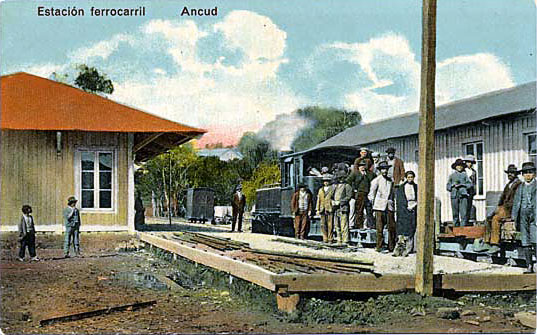
2
A train arrives at Ancud (1).
This is a much better quality picture taken at the same time as a photo already displayed on an earlier page. The loco now raises a few questions. The cylinders appear to be immediately abaft of the buffer beam, which suggests that it is one of the class 'a' 0-6-2Ts. However, it does not have a clerestory on the cab roof and the relatively deep side tanks have squared off fronts rather than the half-round of the As. There are double coal rails on the tank top, unlike any other loco picture so far seen, and the headlamp seems smaller than that fitted to the A class locos.
The carriage is one of the standard well framed bogie saloons with a double roof. This photo shows how near the bogies are to the extreme ends of the vehicle and a hand brake wheel is also visible inside the vestibule.
The loco shed on the right appears to have gained a lean-to extension since the picture at the head of the Operations page was taken.
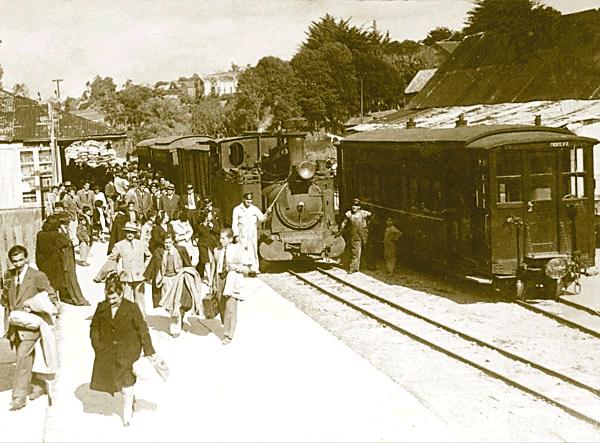
3
Ancud station again (1)
The patterning on the corrugated iron roof and the positioning of the shadows suggests that this is indeed Ancud again. A couple of horse-drawn carts wait whilst a loco is in the platform and a carriage in the loop. Details suggest that this may been taken on the same occasion as the previous photos.
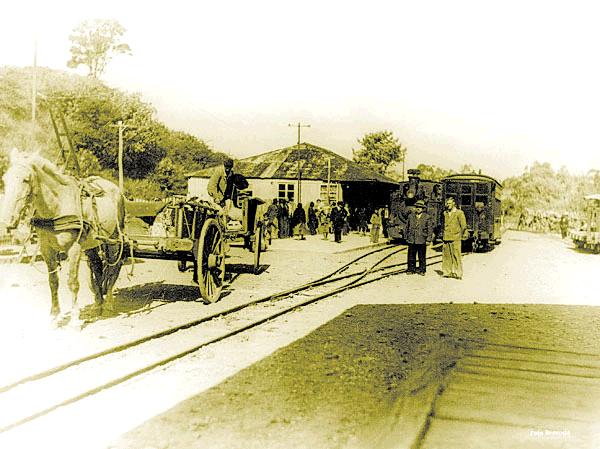
4
A celebratory train in Ancud station, for Independence Day ('las fiestas patrias') September 18th (1).
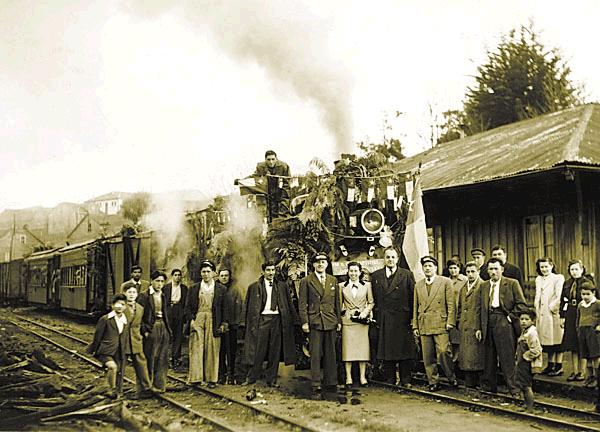
5
Almost certainly on the same occasion (1).
The loco is no. 5039, one of the 'a' class 0-6-2Ts. The year on the board looks like 1951. The photo on the right shows Bernardo O'Higgins who was Chile's first independent leader.
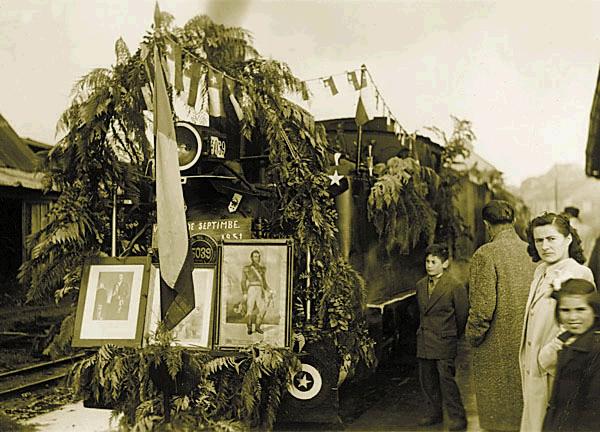
5a
Another celebratory occasion at Ancud station. Date unknown. At this stage the shed on the right has gained small sunshades over the windows, but not yet the lean-to extension that appears in later photos.
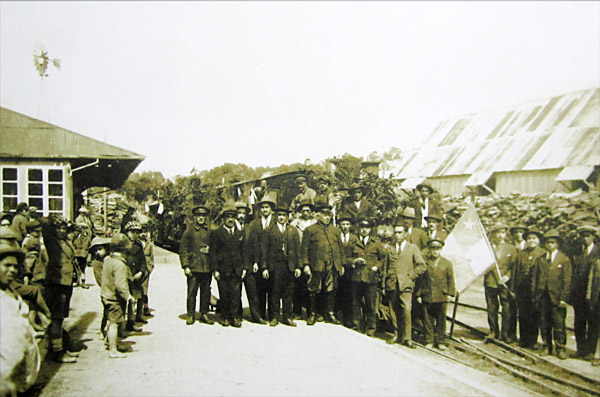
6a & 6b
Chiloe Island has suffered from earthquakes other than the famous one in 1960. The following two pictures from the DIBAM archive show Ancud street scenes after one such event in 1928. In each case the railway track can be seen, raised above street level and with no attempt made to ease the passage of pedestrians, animals or vehicles over it. Click on the pictures to get taken to the DIBAM online archive in which they were found.
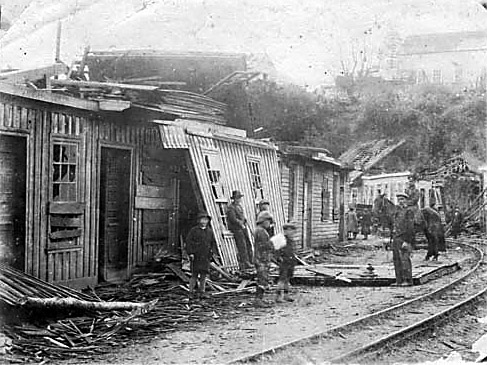
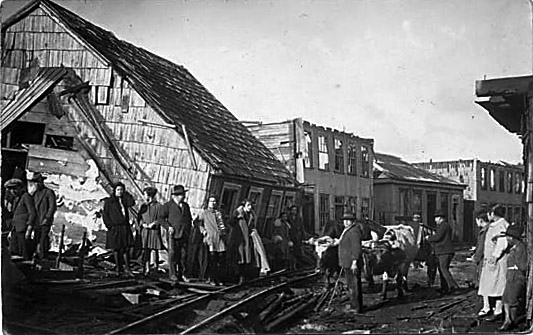
7
La estación Pupelde
Another photograph from the DIBAM collection, and the only one to have surfaced showing this station. The locomotive appears to be a Davenport 0-6-2T as can also be seen in the photo of Coquiao station below.
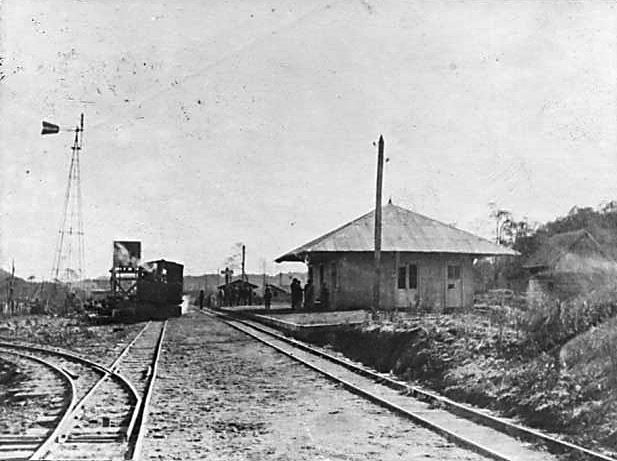
7B
This later photo, from 1940, shows a pair of bus-carrils in Pupelde station. It is interesting to compare this scene with that immediately above. The turning triangle is on the left as before, whilst the water tank, wind pump and station building canopy are also recognisable. The wooden pole so prominent in the amateur photo below may also be that in front of the building above. However, the original clearly defined platform seems to have subsided into the ground.
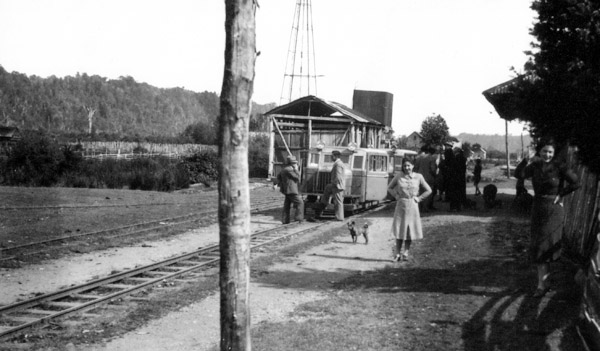
8
Coquiao station shortly after the opening (3)
The typical broad corrugated-iron station roof looks clean and new, as does the station nameboard on a post to the left. A number of horses and riders are visible. A locomotive is hauling a single coach. Whilst the coach is of the normal O&K well pattern, the locomotive DOP for use on the completed railway.
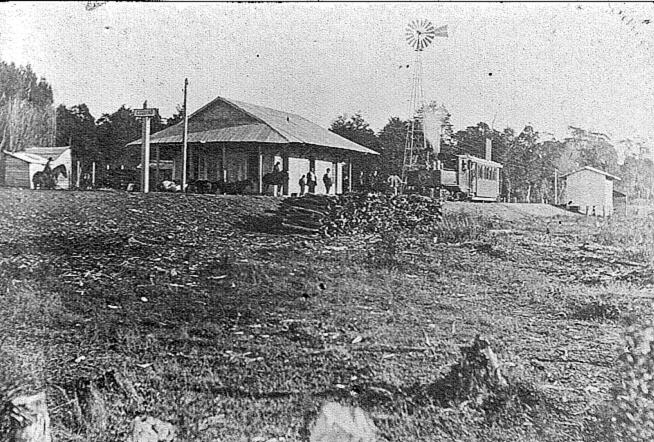
9
Butalcura station looking north, with the river bridge beyond the station buildings. (This picture is published on the web at the site of the Chilean Dirección de Bibliotecas, Archivos y Museos. You are recommended to visit their site to view their pictures in context.)
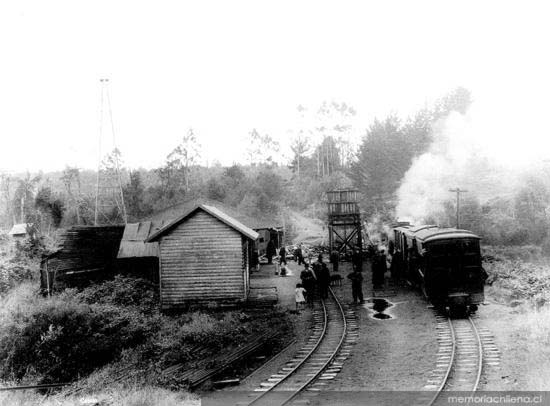
10
An 'a' class loco almost certainly at Butalcura with a northbound train, ie. this view is taken from the opposite end of the station to the previous photo (1).
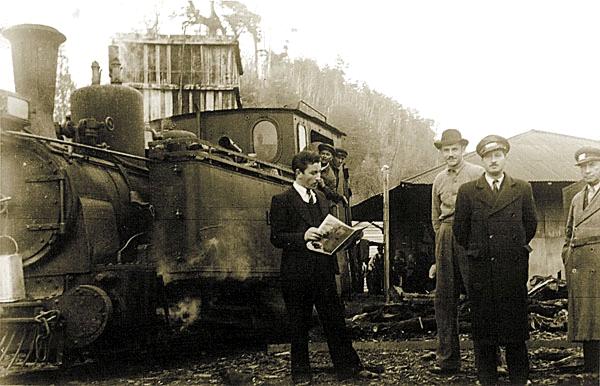
11
Another Gilverto Provoste photo of a particular group of passengers. Butalcura seems to be the location. The balconied vehicle is totally unlike the usual Koppel coaches.
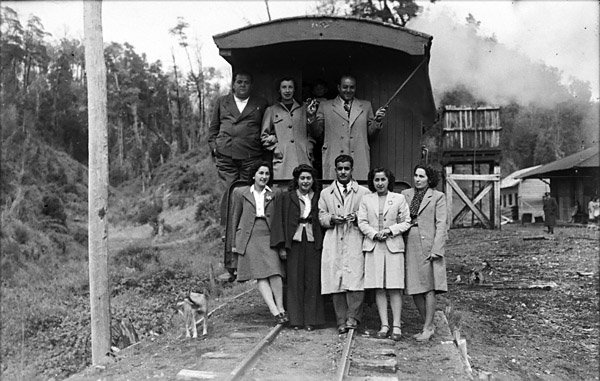
12
The same carriage or a similar one. The location of this picture is not known but it goes well with the previous view and permits a view of the side of the vehicle. It seems to have no side door, which would seem to rule out its being a parcels van or similar.
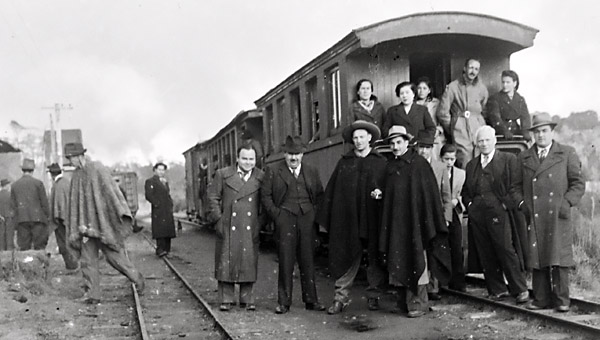
13
The accident around 1930. This appears to be another view of the incident already displayed on the loco and stock page. No details of location or cause are known. The rounded front to the side tanks on some of the 'a' class can be clearly seen here. ( This picture is published on the web at the site of the Chilean Dirección de Bibliotecas, Archivos y Museos, though with the image reversed. You are recommended to visit their site to view their pictures in context.)
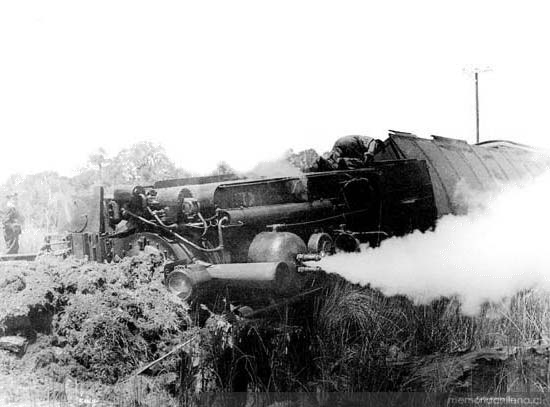
14
Loco 5040 and at least one plataforma together with a track gang? (1) The location is unknown, but the clothing suggests the 1950s.

15
The approach to Castro alongside the road and with 'palafito' stilt houses to the right.
This view is looking north away from the station and the smoke in the distance suggests that a train is nearby (2).
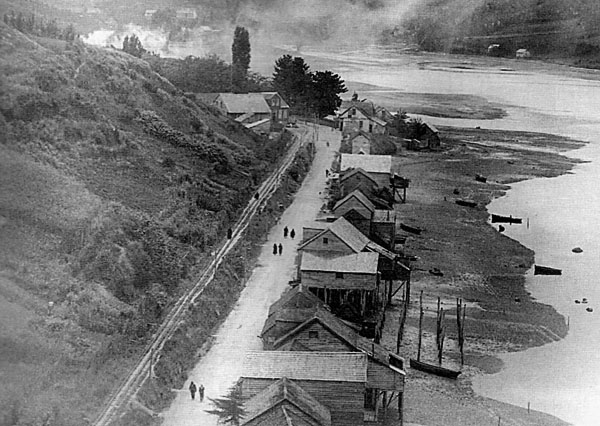
16
The first of a series of photos looking down on Castro station. The track comes in from the right, parallel with the shore. The station building is the low structure directly opposite the muelle and with the platform clearly visible in front. A bogie van stands on the track to the right, and a coach much further along to the left. The tide is high.
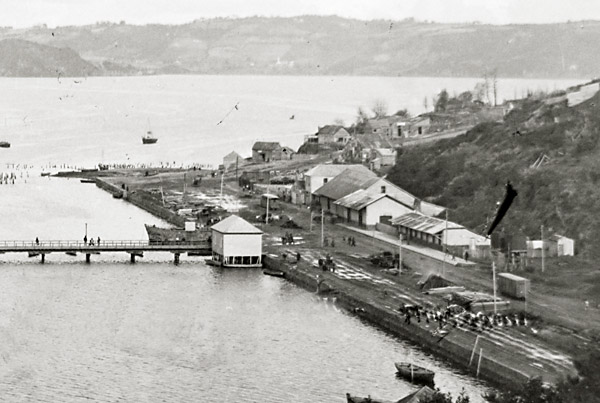
17
A similar scene though at low tide and almost certainly some years later. A number of buildings have sprung up at the further end of the shoreline and with others climbing the hill to the town above. The black building furthest right with the white window-frames is the loco shed. A van stands outside the station building.
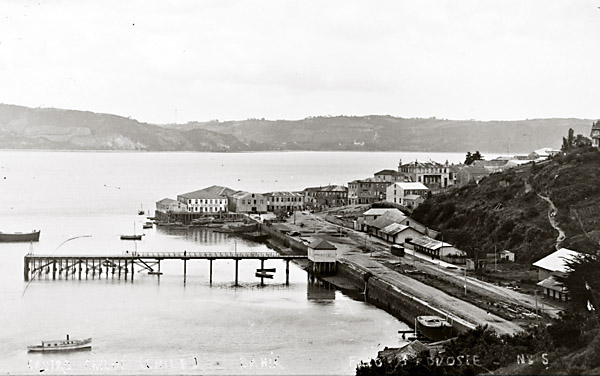
18
It is difficult to date these photos but the third in the series seems to have been taken much later, and possibly towards the end of the railway's life. Whilst the buildings at the headland have disappeared again, a great deal of construction has taken place up the hill. The muelle has lost a good deal of its length but gained a new building this side of its head. Of closer interest to this website are the four bogie vans and a flat resting on the loop in front of the station, and two further flats standing on a siding adjacent to the seawall. Some sort of structure has been constructed just this side of the station, possibly a water tank. There seem to be an inordinate number of people on the muelle, with a boat clearly embarking or disembarking them.
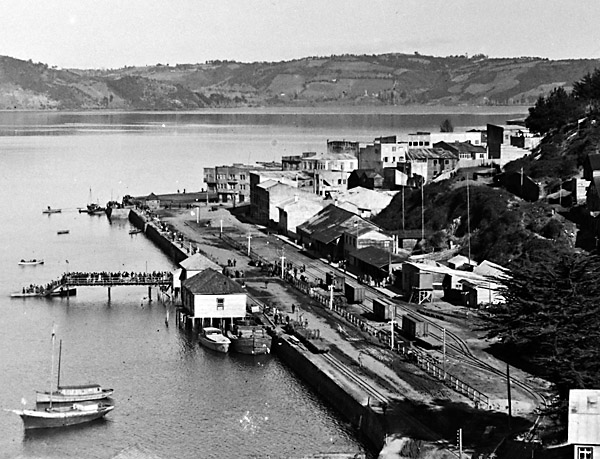
19
A crowd poses in front of a highly decorated train at Castro station (1)
The loco is probably an 'a' class, though the cab, unusually, seems to extend right to the back of the bunker. The van behind the loco clearly has a high level American style hand-brake wheel, whilst the two coaches carry the lettering 'FFCC del Est.' above the windows.
The view is looking north, out of the station and along the line. The foremost main track is that to the loco shed off to the left. The short tracks in the foreground are interesting - even the small four-wheeled wagons would have been too heavy to lift onto right-angled tracks like these without the help of wagon turntables, so there must have been some sort of lightweight trolleys or 'zorras' which used them.
A board across the front of the smokebox appears to include the word 'setiembre', so this may as above be celebrating 'Fiestas Patrias' or Independence Day, a Chilean national holiday on September 18th. Again the clothing suggests a date in the 1950s rather than earlier.
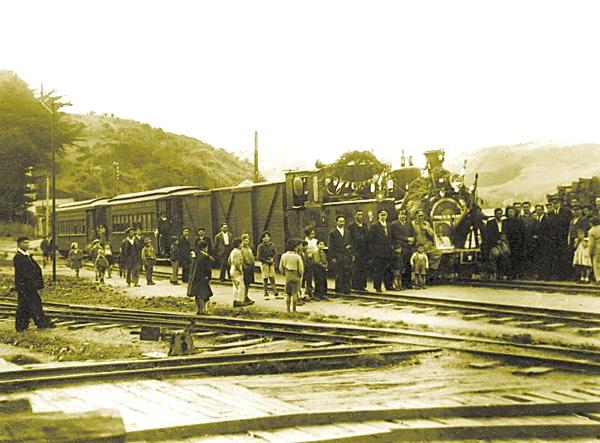
20
Another special occasion at Castro station (1).
This view looks north, with the typical low pitched roof of the station building on the left, the water tank and loco shed further away on the left of the tracks, and some sort of small vessel just visible over the shoreline at the far right. It can be seen that there are three main through tracks in the station area.
The occasion was apparently the visit of Chile's president, Señor Pedro Aguirre Cerda, to Chiloe. The crowd is certainly much bigger than in the previous photos, suggesting a real special occasion rather than just an annual holiday. Two early type bus-carrils are in the platform road. The vehicle furthest left is unidentified as it does not have the double roof of the usual passenger cars.
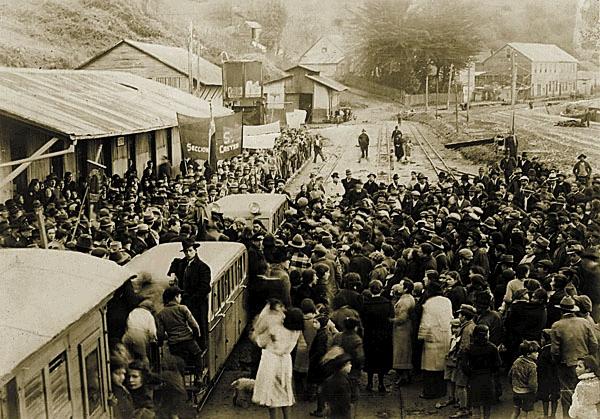
21
Another celebratory occasion in front of a later type bus-carril (1).
Occasion, date and location are all unknown.
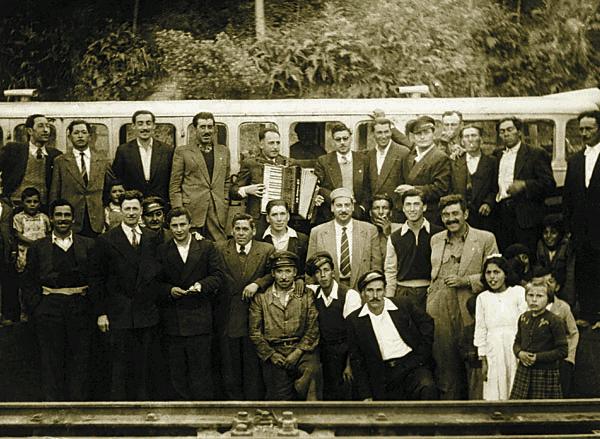
The following three photos were all taken during the aftermath of the earthquake in 1960. The so-called Valdivia earthquake was one of the most powerful ever recorded. It caused both temporary and permanent shifts in sea level around Chiloe, and confirmed the decision to close the railway (2).
22
This photo looks south along the line on the final approach into Castro. If it weren't for the earthquake the area of water between the 'palafitos' and the railway would normally have been the main road!
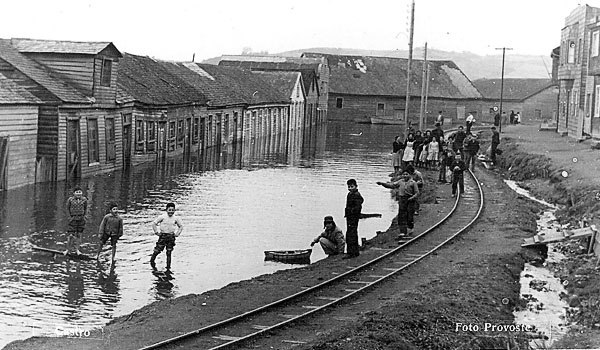
23
Castro station under water. The single storey station building is to the left with a bogie van in front of it, whilst the loco shed with its clerestory is behind the small shed in the centre.
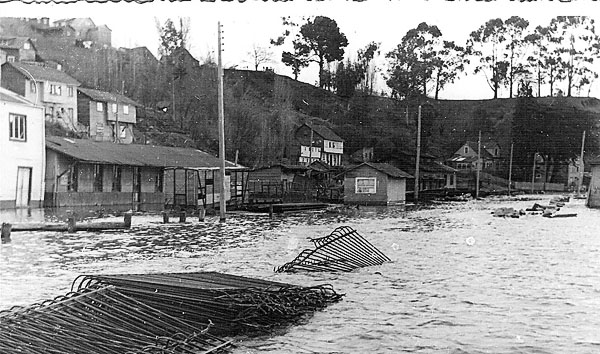
24
Another view of Castro station, behind the same bogie van to the right, whilst a second vehicle, possibly a cattle wagon, is to the left.
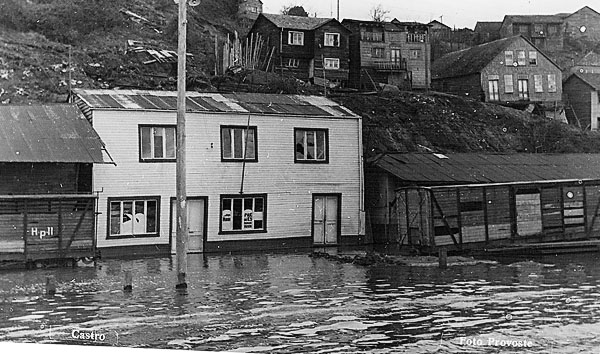
25
The end of the line at Castro. On the far right is a corner of the municipal administration building which was destroyed in the 1960 earthquake.

26
One of the early style bus-carrils.
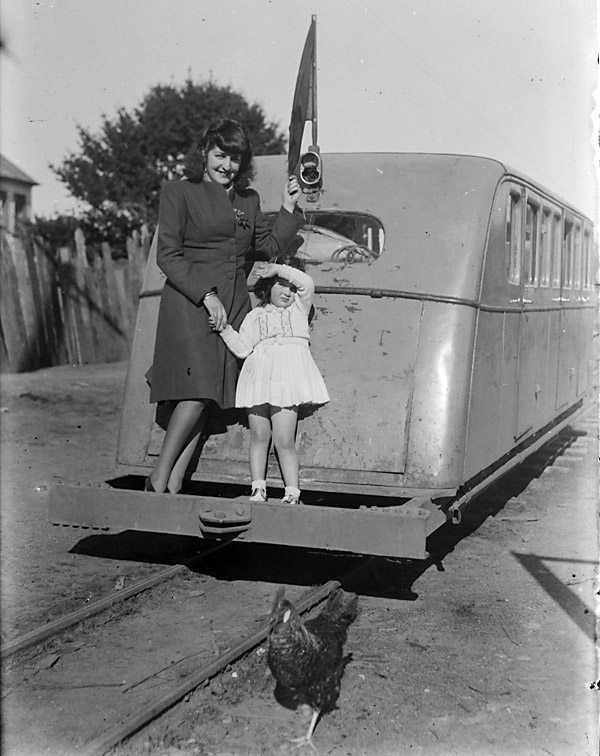
27
A xilo-carril or wooden railway
This picture has sometimes been described as showing a construction train on the Ancud-Castro line. However, it is much more likely to show timber being extracted for one of the many sawmills on the island. The rail show no signs of having a narrow web beneath the wide head and are probably of simple rectangular timber. If so then this is the only photo yet to have surfaced showing such a 'xylo-carril'.
References:
1 Photos discovered by the Camahueto de Hierro student team making a film about the railway, in the Town Archives in Castro.
2 Photos by Gilverto Provoste, a professional photographer in Castro in the mid 20th century. Reproduced by courtesy of the Museo de Sitio Castillo de Niebla (DIBAM / MINEDUC), Niebla, Chile.
3 Photo kindly provided by Señor Pablo Moraga.
29-10-11
|
